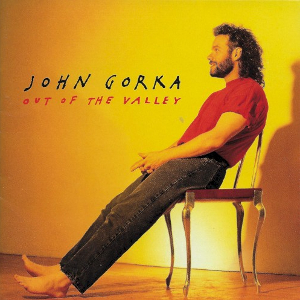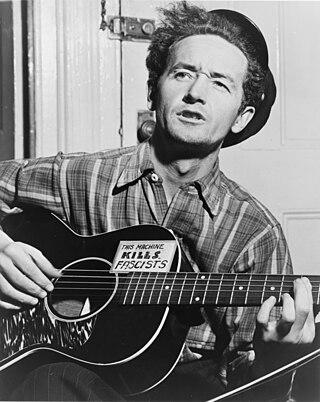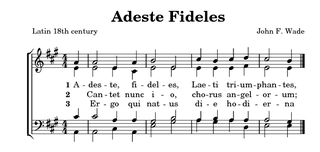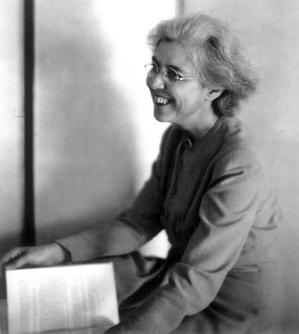Background
Sing Out! was the primary publication of the tax exempt, not-for-profit, educational corporation of the same name. According to the organization's website, "Sing Out!'s mission is to preserve and support the cultural diversity and heritage of all traditional and contemporary folk musics, and to encourage making folk music a part of our everyday lives." [2] Irwin Silber was an important co-founder along with Pete Seeger, and was the magazine's long-time editor from 1951 to 1967. [3] Its final editor and executive director, since 1983, was Mark D. Moss. The editors applied a very broad definition of folk music including material from contemporary singer-songwriters, Americana, roots, blues, bluegrass, and world music.
One defining feature of the magazine was the inclusion of 15 or more songs with lyrics and music within the pages of each issue—supplemented with an illustrative CD from 2001 until it ceased publication in 2014. The magazine also contained in-depth articles profiling musicians and musical traditions, "teach-ins," reviews of recordings and print publications, a comprehensive festival and camp listing, and columns covering topics such as songwriting, storytelling, children's music, and the folk process.
The corporate headquarters of Sing Out! were located in Bethlehem, Pennsylvania which is also home to the Sing Out! Resource Center. The magazine was distributed by mail subscriptions, and could be found in some North American bookstores and libraries.
Sheet music is a handwritten or printed form of musical notation that uses musical symbols to indicate the pitches, rhythms, or chords of a song or instrumental musical piece. Like its analogs – printed books or pamphlets in English, Arabic, or other languages – the medium of sheet music typically is paper. However, access to musical notation since the 1980s has included the presentation of musical notation on computer screens and the development of scorewriter computer programs that can notate a song or piece electronically, and, in some cases, "play back" the notated music using a synthesizer or virtual instruments.

A hymnal or hymnary is a collection of hymns, usually in the form of a book, called a hymnbook. They are used in congregational singing. A hymnal may contain only hymn texts ; written melodies are extra, and more recently harmony parts have also been provided.

The term American folk music encompasses numerous music genres, variously known as traditional music, traditional folk music, contemporary folk music, vernacular music, or roots music. Many traditional songs have been sung within the same family or folk group for generations, and sometimes trace back to such origins as the British Isles, Mainland Europe, or Africa. Musician Mike Seeger once famously commented that the definition of American folk music is "...all the music that fits between the cracks."

The colonial history of the United States began in 1607 with the colonization of Jamestown, Virginia. Music of all genres and origins emerged as the United States began to form. From the Indigenous spiritual music to the African banjos, music in the United States is as diverse as its people. In New England, the music was very religious and was vitally important in the rising of American music. The migration of people southward led to the settling of the Appalachian Mountains. There many poor Europeans inhabited and brought country blues and fiddling. As music spread, the religious hymns were still just as popular. The first New England School, Shakers, and Quakers, which were all music and dance groups inspired by religion, rose to fame. In 1776, St. Cecilia Music Society opened in the Province of South Carolina and led to many more societies opening in the Northern United States. African slaves were brought to the United States and introduced the music world to instruments like the xylophone, drums and banjo. The diverse music of the United States comes from the diverse type of people who first colonized this country.

Fredrick Malcolm Waring Sr. was an American musician, bandleader, and radio and television personality, sometimes referred to as "America's Singing Master" and "The Man Who Taught America How to Sing". He was also a promoter, financial backer and eponym of the Waring Blendor, the first modern electric blender on the market.
High Fidelity was an American magazine that was published from April 1951 until July 1989 and was a source of information about high fidelity audio equipment, video equipment, audio recordings, and other aspects of the musical world, such as music history, biographies, and anecdotal stories by or about noted performers.

Out of the Valley is a 1994 album by contemporary folk singer-songwriter John Gorka. This is Gorka's fifth album and unlike the previous four recorded in various places in the northeastern United States, Out of the Valley was recorded at Imagine Sound Studios in Nashville, Tennessee. This is also the first of several Gorka albums to employ the talents of guitarist/producer John Jennings.

"Oleanna" is a Norwegian folk song that was translated into English and popularized by former Weavers member Pete Seeger. The song is a critique of Ole Bull's vision of a perfect society in America. Oleanna was actually the name of one of Ole Bull's settlements in the New Norway colony of Pennsylvania. His society failed, and all of the immigrants moved away since the dense forest made it hard to settle there. The lyrics concern the singer's desire to leave Norway and escape to Oleanna, a land where "wheat and corn just plant themselves, then grow a good four feet a day while on your bed you rest yourself."

Irwin Silber was an American Communist, editor, publisher, and political activist. He edited the folk music magazine Sing Out! and was active in far-left politics throughout his life.

The American folk music revival began during the 1940s and peaked in popularity in the mid-1960s. Its roots went earlier, and performers like Josh White, Burl Ives, Woody Guthrie, Lead Belly, Big Bill Broonzy, Billie Holiday, Richard Dyer-Bennet, Oscar Brand, Jean Ritchie, John Jacob Niles, Susan Reed, Paul Robeson, Bessie Smith, Ma Rainey and Cisco Houston had enjoyed a limited general popularity in the 1930s and 1940s. The revival brought forward styles of American folk music that had in earlier times contributed to the development of country and western, blues, jazz, and rock and roll music.

The Moravian musical tradition in United States began with the earliest Moravian settlers in the first half of the 18th century.
These Moravians were members of a well-established church – officially called Unitas Fratrum or Unity of Brethren – that by [the mid-18th century] had already seen almost three centuries of rich experience of religious life. They were spiritual descendants of the Czech priest Jan Hus, who for his attempts at reform was martyred in 1415. Forty-two years later in 1457, some of his followers founded a church body consecrated to following Christ in simplicity and dedicated living.
This newly constituted church developed a rich and orderly ecclesiastical life in the 15th and 16th centuries, but in the Thirty Years War of 1618-48 it was virtually wiped out. In the 1720s a few exiles of this religious heritage, along with various other seekers after truth, found refuge on an estate of a Saxon nobleman named Nicholaus Ludwig von Zinzendorf. There in their village of Herrnhut the ancient church experienced a rebirth culminating in a spiritual blessing on August 13, 1727, in which their former diversity of purpose was welded into one.
In a brief five years, by 1732, that first little village of the Renewed Moravian Church began sending missionaries to all corners of the world. After establishing work in England, the Moravians sent colonists to America in 1735. The initial settlement in Georgia proved unsuccessful, partly because of war between Protestant England and Catholic Spain to the south in Florida. More permanent work was established in Pennsylvania in 1741, with the town of Bethlehem as their chief center. Other settlements in Pennsylvania followed. The Moravians purchased 100,000 acres in North Carolina and settled at Bethabara in 1753 with the central town of Salem being founded in 1766.” [Villages of the Lord]

A hymn tune is the melody of a musical composition to which a hymn text is sung. Musically speaking, a hymn is generally understood to have four-part harmony, a fast harmonic rhythm, with or without refrain or chorus.

Contemporary folk music refers to a wide variety of genres that emerged in the mid 20th century and afterwards which were associated with traditional folk music. Starting in the mid-20th century a new form of popular folk music evolved from traditional folk music. This process and period is called the (second) folk revival and reached a zenith in the 1960s. The most common name for this new form of music is also "folk music", but is often called "contemporary folk music" or "folk revival music" to make the distinction. The transition was somewhat centered in the US and is also called the American folk music revival. Fusion genres such as folk rock and others also evolved within this phenomenon. While contemporary folk music is a genre generally distinct from traditional folk music, it often shares the same English name, performers and venues as traditional folk music; even individual songs may be a blend of the two.

Helen Hartness Flanders, a native of the U.S. state of Vermont, was an internationally recognized ballad collector and an authority on the folk music found in New England and the British Isles. At the initiative of the Vermont Commission on Country Life, Flanders commenced a three-decade career capturing traditional songs that were sung in New England—songs that, in many cases, traced their origin to the British Isles. The timing of her life work was critical, coming as it did when people were turning away from traditional music in favor of listening to the radio. Today her nearly 4,500 field recordings, transcriptions and analyses are housed at the Flanders Ballad Collection at Middlebury College, Middlebury, Vermont and have been a resource for scholars and folk singers, since the establishment of the collection in 1941.

Elderly Instruments is a musical instrument retailer in Lansing, Michigan, United States, with a reputation as a "megastore", a repair shop and a locus for folk music including bluegrass and "twang". Specializing in fretted instruments, including acoustic and electric guitars, banjos, mandolins, and ukuleles, Elderly maintains a selection of odd or rare instruments. Elderly is known as a premier repair shop for fretted instruments, as one of the larger vintage instrument dealers in the United States, and as a major dealer of Martin guitars in particular.
People's Songs was an organization founded by Pete Seeger, Alan Lomax, Lee Hays, and others on December 31, 1945, in New York City, to "create, promote, and distribute songs of labor and the American people." The organization published a quarterly Bulletin from 1946 through 1950, featuring stories, songs and writings of People's singers members. People's Songs Bulletin served as a template for folk music magazines to come like Sing Out! and Broadside.
In Tune Monthly is an American magazine that seeks to enrich the band, orchestra, choral and general music curriculum. It is written for middle and high school music students, for whom it is typically purchased by music educators. It is also sold in some musical instrument and equipment stores and can be purchased online.
Jerry Silverman is an American folksinger, guitar teacher and author of music books. He has had over 200 books published, which have sold in the millions, including folk song collections, anthologies and method books for the guitar, banjo and fiddle. He has taught guitar to hundreds of students. He has presented concerts and lectures at schools, universities and concert halls in the U.S. and abroad.
Folkways Records was a record label founded by Moses Asch that documented folk, world, and children's music. It was acquired by the Smithsonian Institution in 1987 and is now part of Smithsonian Folkways.

Robert Watson Schmertz was a Pittsburgh-based architect and folk musician whose music has been covered by Pete Seeger, Burl Ives, Tennessee Ernie Ford, Bill and Gloria Gaither, The Statler Brothers, The Cathedrals, Dailey & Vincent, the River City Brass Band, and Ernie Haase & Signature Sound. Born in Squirrel Hill, Pittsburgh, Pennsylvania, Schmertz attended the Carnegie Institute of Technology, where he wrote the Carnegie Tartans' fight song, "Fight for the Glory of Carnegie," and played the banjo in a jazz orchestra; after he graduated with an architecture degree in 1921, Schmertz designed buildings. He taught at Carnegie for more than thirty-five years before his retirement.












